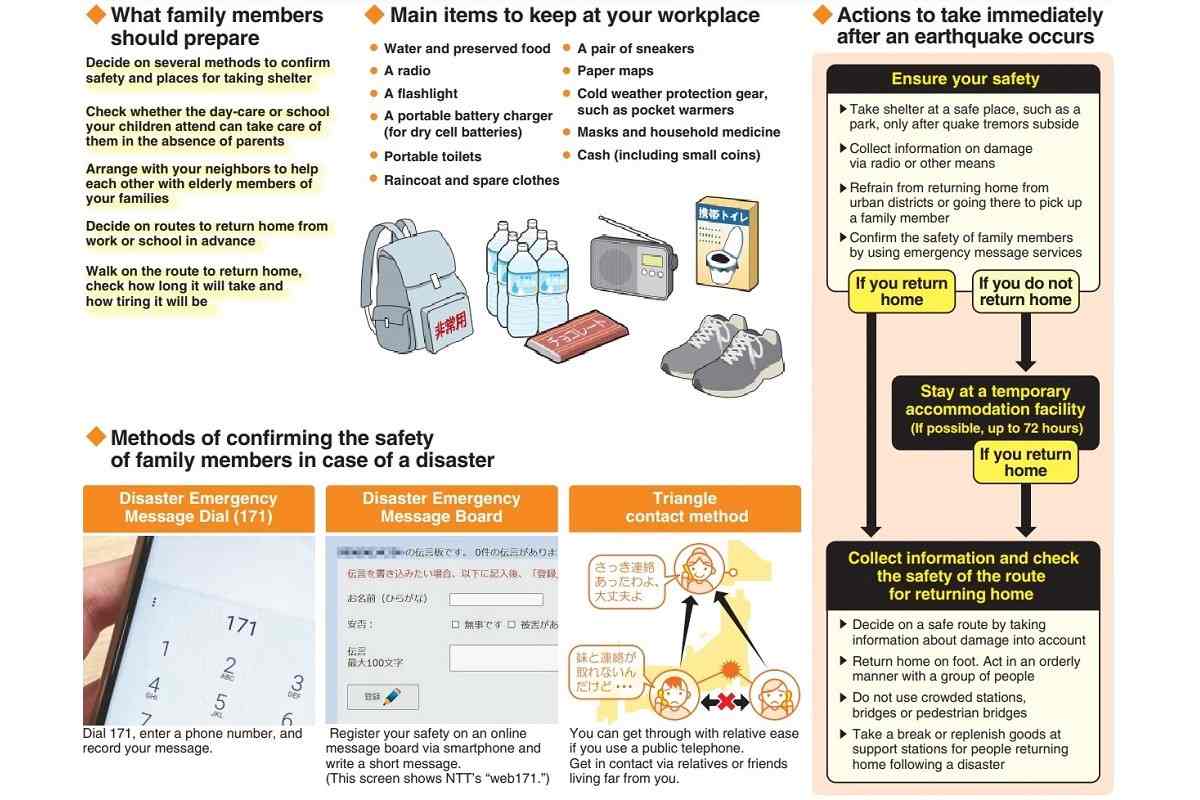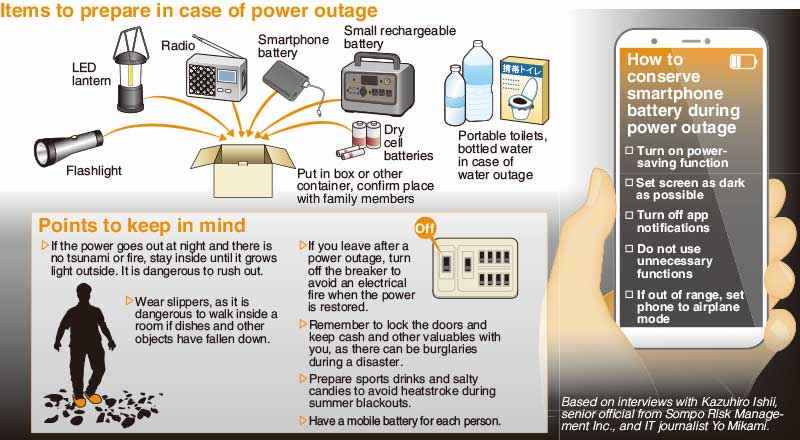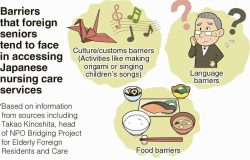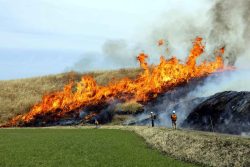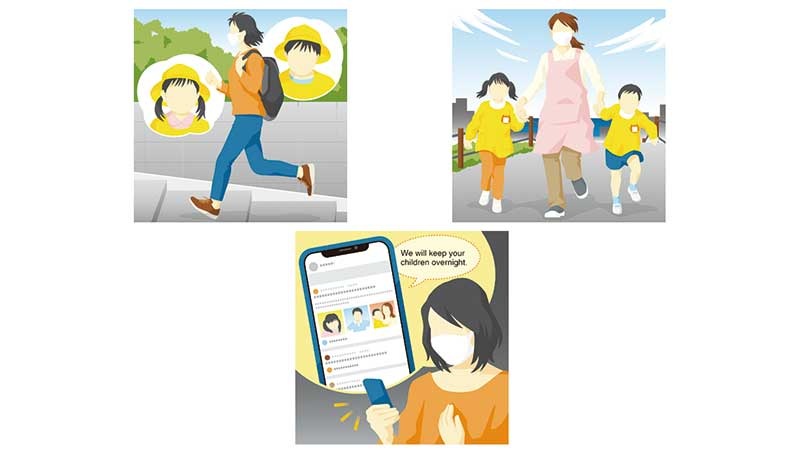
15:47 JST, October 25, 2022
Preschool facilities such as day care centers and kindergartens must give top priority to the safety of children in emergencies, because it’s difficult for small children to figure out how to protect themselves in such situations.
Through daily preparations and frequent evacuation drills, children and staff members need to learn intuitively what to do if disaster occurs. Parents are also encouraged to monitor their children’s facilities from the perspective of disaster preparedness and response.
Let’s look at a common scenario.
Earthquake occurs; 2 children at kindergarten
Taro, 36, and Hanako, 34, have a 5-year-old son and a 3-year-old daughter who both attend the same private kindergarten. It takes about 20 minutes by bus to get to the kindergarten, but they decided to enroll their children there because the kindergarten has a reputation for its focus on English education.
Both children enjoy going to the kindergarten, and they usually return home at about 2:30 p.m.
After finding a job near her home that allows her to get back before the children return, Hanako works part-time three times a week.
One day at about 2 p.m., an earthquake more powerful than she had ever experienced occurred. At that time, Hanako was at her home, which is located near the sea. The power went out, dishes broke, and books fell off bookshelves, but fortunately there seemed to be no serious damage.
However, Hanako learned on her smartphone that a major tsunami warning had been issued. She became worried about her children’s safety and became agitated, thinking, “I have to pick them up as soon as possible.” She called the kindergarten, but didn’t get through. As the roads started to jam, Taro, who is a company employee and commutes by car, was unlikely to be able to return home anytime soon.
Hanako feared she might be caught in a tsunami on her way to pick up the children. She then remembered that their kindergarten sometimes held evacuation drills. With hope for her children’s safety, she told herself that their teachers would protect them. She then evacuated to higher ground nearby.
Teachers take children to higher ground
At that time, the kindergarten, where the two children were present, was in a panic.
Parents and grandparents rushed to the kindergarten to pick up their children or grandchildren. Some of them did not have anything to prove that they were grandparents, prompting one person to ask teachers in frustration, “Why can’t I pick up my grandchild?” Several teachers were busy dealing with these people.
The kindergarten director and other staff members were not accustomed to responding to disasters.
At the kindergarten, evacuation drills were held only twice a year, the minimum frequency required under the Fire Service Law, so no one was well familiarized with the procedures. Although a disaster response manual had been prepared, it simply specified “nearby higher ground” as an evacuation spot in the event of a tsunami. Even this simple information had not been communicated to all of the staff.
With no injuries reported, all the children were gathered in the kindergarten yard and standing by. However, many of them did not have sufficient experience taking part in evacuation drills, while some began to cry in anxiety. The teachers struggled to calm them down and could not decide where to flee.
A local resident started shouting, “A tsunami might be coming. Run!”
One teacher then said firmly, “Just in case things go wrong, we have no choice but to go to higher ground behind the kindergarten.”
That prompted other teachers to act quickly, with one after another saying, “We don’t have much time. Hurry up!” They all ran to higher ground, pulling the children’s hands.
Message arrives from kindergarten
The tsunami did not reach the kindergarten, and all of the children and staff members were safe.
However, the area around Taro and Hanako’s residence was flooded. Hanako heard from Taro that he would stay overnight at his office to avoid the chaos.
After arriving at an evacuation shelter on higher ground, Hanako thought about going to the kindergarten to pick up her children. But given that the power was out and it was gradually getting dark, she thought it would be too dangerous to do so, as she would have to walk along a flooded road.
At that moment, Hanako received a message from the kindergarten on her smartphone. “All the children are safe, and there has been no damage to the kindergarten,” the message read. “For those who can’t come to pick up their children, we will keep your children overnight.”
Hanako was relieved to read the message, but soon became worried about the children’s meals and bedding.
Unlike at nursery schools, kindergartens don’t have nap time for pupils, so she wondered if her children’s kindergarten had any bedding and if they could eat properly. She regretted that she had not paid much attention to disaster preparedness for her family. She also remembered hearing that the preschool that her friend’s child attends holds an evacuation drill every month in which parents participate by picking up their children.
“I should have discussed disaster response measures with the kindergarten,” Hanako thought. At the evacuation shelter which was full of people, she could not sleep because of anxiety.
Repeated drills improve evacuation skills
It is difficult for small children to judge for themselves the level of danger in an emergency and the need for evacuation.
However, Kyoko Tsukigase, an associate professor at Kokushikan University who specializes in emergency response, said, “If children repeatedly experience evacuation drills from around the age of 3, they will be able to take such steps as protecting their heads when an earthquake occurs.”
It is necessary to check the types of disasters that are likely to occur at the location of preschool facilities as well as to hold evacuation drills repeatedly.
The Yomiuri Shimbun conducted a survey on disaster preparedness at preschool facilities in 109 major municipalities nationwide, including government ordinance-designated cities. As of January this year, the survey found that 42.1% of these facilities were located in areas at risk of being inundated by a tsunami or flooding by heavy rain.
Under the Child Welfare Law, childcare facilities are required to conduct evacuation and fire drills at least once a month. However, the Fire Service Law and other regulations oblige kindergartens to conduct such drills at least twice a year. The required frequency of drills differs among facilities for small children.
“Unless you receive training, there is no way you can do it in the event of a disaster,” Tsukigase said. “It is important to make improvements through trial and error.”
The quality of evacuation drills is also important.
Otsuchi Kodomoen, a certified childcare facility in Otsuchi, Iwate Prefecture, was completely destroyed by the tsunami triggered by the Great East Japan Earthquake in March 2011. In imminent danger from the tsunami, the facility’s staff members quickly decided to flee with the children, climbing up a steep slope that did not have a walking path, and thus managed to escape the approaching tsunami.
In January of that year, the facility had held its first unannounced evacuation drill. At that time, the staff members felt alarmed as it took them more time than they thought to reach a nearby evacuation site, so they reviewed their evacuation procedures.
“If we had not carried out the unannounced drill, we might have been caught in the tsunami,” said Yumiko Yagisawa, the head of Otsuchi Kodomoen. “I thought there was no point in training by simply repeating the same thing.”
Many preschool facilities conduct disaster drills involving parents picking up their children. Parents are encouraged to monitor disaster preparedness and evacuation procedures at their children’s facilities and call for improvements if any inadequacies or questionable matters are found.
"JN Specialities" POPULAR ARTICLE
-

The Japan News / Weekly Edition (12/12-12/18)
-

Noodle Dining Shunsai / Rich Oyster Ramen to Savor at Odasaga; Experienced 68-year-old Owner Creates Numerous Ramen Varieties
-

The Japan News / Weekly Edition (12/5-12/11)
-

People Keep Loved Ones’ Ashes Close in Special Jewelry, Small Urns as Unique Way to Memorialize Them
-

The Japan News / Weekly Edition (12/19-12/25)
JN ACCESS RANKING
-

Keidanren Chairman Yoshinobu Tsutsui Visits Kashiwazaki-Kariwa Nuclear Power Plant; Inspects New Emergency Safety System
-

Tokyo Economic Security Forum to Hold Inaugural Meeting Amid Tense Global Environment
-

Imports of Rare Earths from China Facing Delays, May Be Caused by Deterioration of Japan-China Relations
-

University of Tokyo Professor Discusses Japanese Economic Security in Interview Ahead of Forum
-

Japan Pulls out of Vietnam Nuclear Project, Complicating Hanoi’s Power Plans

